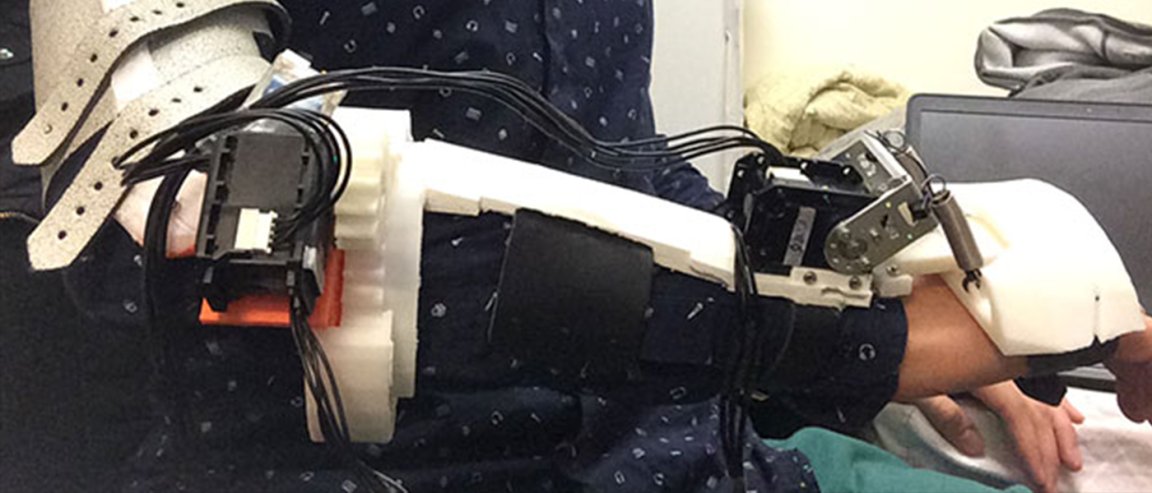
Tremor Treating Exoskeleton
While there have been a lot of new developments that try to treat Parkinson’s, options are limited when it comes to living with the tremors day to day. Scientists are exploring the possibility of using exoskeletons to help in the battle. Benny Lo and researchers at Imperial College London have devised an arm exoskeleton that recognizes actions requiring dexterity and activates to mitigate the tremors when they would be most disruptive. The shaking is met with the production of calculated countermovements provided by an actuator. The device pushes on the arm with vibrating motions that help to negate the tremor. Their research was discussed at the annual Body Sensor Networks Conference.

This is not the first exoskeleton developed to treat tremors. Even so, the software developed makes this device unique. The software allows the exoskeleton to classify the user’s activities and turn on to suppress tremors only when needed. While this may seem like an inconsequential feature, it does reduce power consumption. The device can remain in standby mode until the wearer needs to use fine motor control to complete tasks like drinking from a glass. The device then becomes more practical as it needs less power to operate.
Building the Device
As explained in an article appearing on IEEE’s site, Spectrum, Dr. Lo’s team “started with a 3D-printed plastic frame, then adding two small servo motors, at the wrist and elbow, which contain positional sensors. They also attached an accelerometer and gyroscope to the back of the hand.” This created a 350 gram (less than a pound) exoskeleton that fits around the arm.
The latest data shows the prototype can distinguish activities with about 70 percent accuracy. Upgrades are looking to increase the number of activities detected by the exoskeleton to include eating or using a computer.